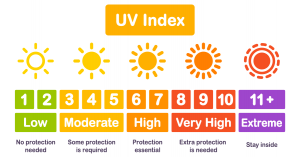 It’s fall so let’s talk about falls. While they affect the older population more than the young, fall injuries are still very real for everyone. Did you know you have a 1 in 114 chance of dying from a fall? In comparison your chance of dying in a plane is only 1 in 188,000. The probability of you dying from a fall are almost equal to the probability of dying in a car crash at 1 in 103.
It’s fall so let’s talk about falls. While they affect the older population more than the young, fall injuries are still very real for everyone. Did you know you have a 1 in 114 chance of dying from a fall? In comparison your chance of dying in a plane is only 1 in 188,000. The probability of you dying from a fall are almost equal to the probability of dying in a car crash at 1 in 103.
More than 9 million Americans are treated in the emergency room for falls each year. One of every three nonfatal injuries in the U.S. comes from falls. With all of this in mind, it’s important to understand your risk for falls and how they can be prevented.
First, take this self-assessment from the CDC. If you answer yes to four or more of the questions, you are at an increased risk for falls. To help prevent them in your home, here is a list if things you can control:
- Keep floors clear of clutter
- Keep drawers and cabinets closed
- Keep electrical cords out of traffic areas
- Create open pathways with at least 3 feet of space between furniture
- Ensure good lighting in each room
Next, learn how to choose and use a ladder safely for your home projects.
- Consider the size and weight of the ladder in comparison to who will use it, what gear will be used, and what the purpose is for (Ladders do have weight limits)
- Angle your ladder 1 foot away from the surface for every 4 feet in height where you are working
- Extend the ladder at least 3 feet over the edge of where you are working
- Fasten the top of the ladder to a support
- Do not stand any higher than the third rung of the ladder
- Have someone support the bottom of your ladder
- Ensure cleats on the bottom of the ladder are anchoring the ladder
- Do not lean sideways on the ladder
- Do not wear loose clothing that could be caught on the ladder
- Keep a 25-foot clearance from power lines
- Choose fiberglass when you can (especially when working anywhere near power lines)
- Maintain 3-point-control when climbing, with hands on the rungs, not the sides (Read Looking Up: An Eye on Ladder Safety)
Ready to learn more? Listen in as Kevin King discusses your fall prevention assessment and ladder safety on People’s Law Talk.
For more information on choosing fall prevention and ladder safety read:
- Fall Safety: Take Steps to Remain Independent Longer (National Safety Council)
- Make Fall Safety a Top Priority (National Safety Council)
- Check for Safety (Center for Disease Control)

 Are you…yawn…tired at work? Nearly 40% of U.S. workers are sleep deprived causing them to be fatigued.
Are you…yawn…tired at work? Nearly 40% of U.S. workers are sleep deprived causing them to be fatigued. School is back in session. The backpacks are filled, the chairs and desks are cleaned, and the teachers are refreshed. But, for all the preparations parents and teachers make for students, the environments created for learning may not be ready and conducive for learning.
School is back in session. The backpacks are filled, the chairs and desks are cleaned, and the teachers are refreshed. But, for all the preparations parents and teachers make for students, the environments created for learning may not be ready and conducive for learning. May through September usually means warm or even hot weather here in Indiana. It also means sun, UV rays, and increased risk of skin damage, including melanoma.
May through September usually means warm or even hot weather here in Indiana. It also means sun, UV rays, and increased risk of skin damage, including melanoma.
 In 1983 only 13 percent of the public regularly used seat belts. Advertising and education campaigns were undertaken and 26 years later, that number increased to approximately 85 percent. That’s more than 25 years to make a usage change of 72 percent. In the meantime, people were injured and died.
In 1983 only 13 percent of the public regularly used seat belts. Advertising and education campaigns were undertaken and 26 years later, that number increased to approximately 85 percent. That’s more than 25 years to make a usage change of 72 percent. In the meantime, people were injured and died. Eleven million children in the US regularly attend some form of non-relative childcare. While much is studied about early childhood education and social development in these settings, there are very little answers about the safety of daycares.
Eleven million children in the US regularly attend some form of non-relative childcare. While much is studied about early childhood education and social development in these settings, there are very little answers about the safety of daycares.